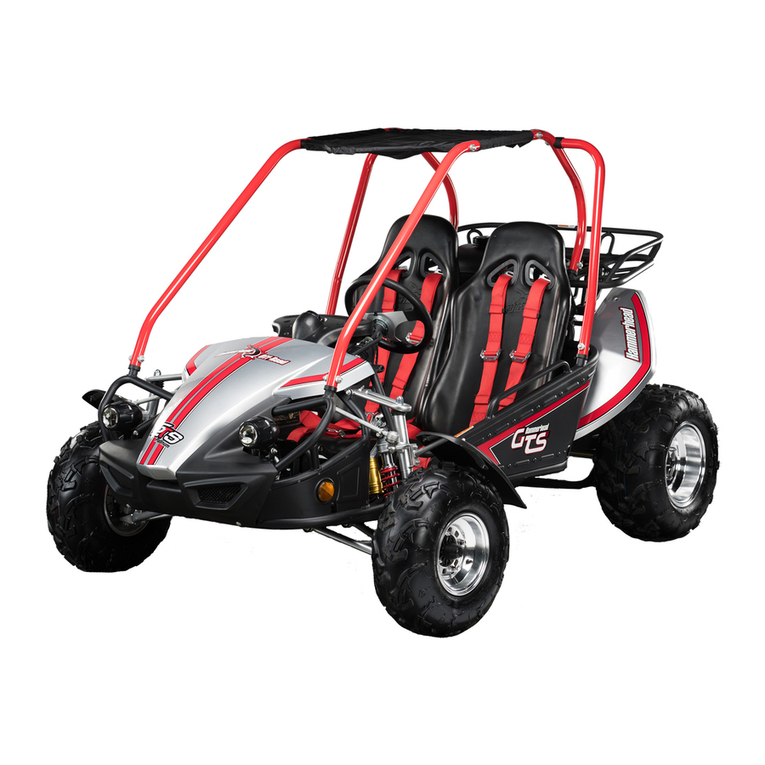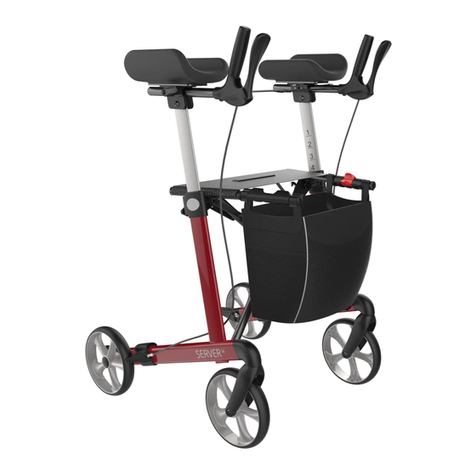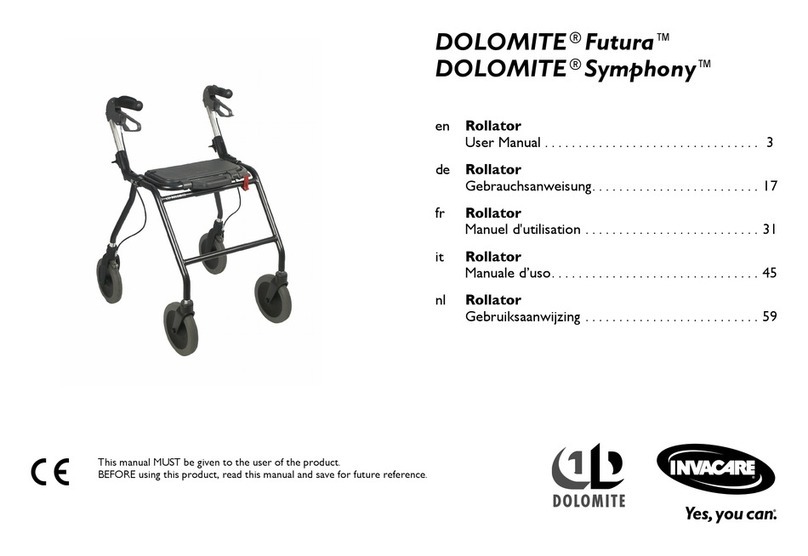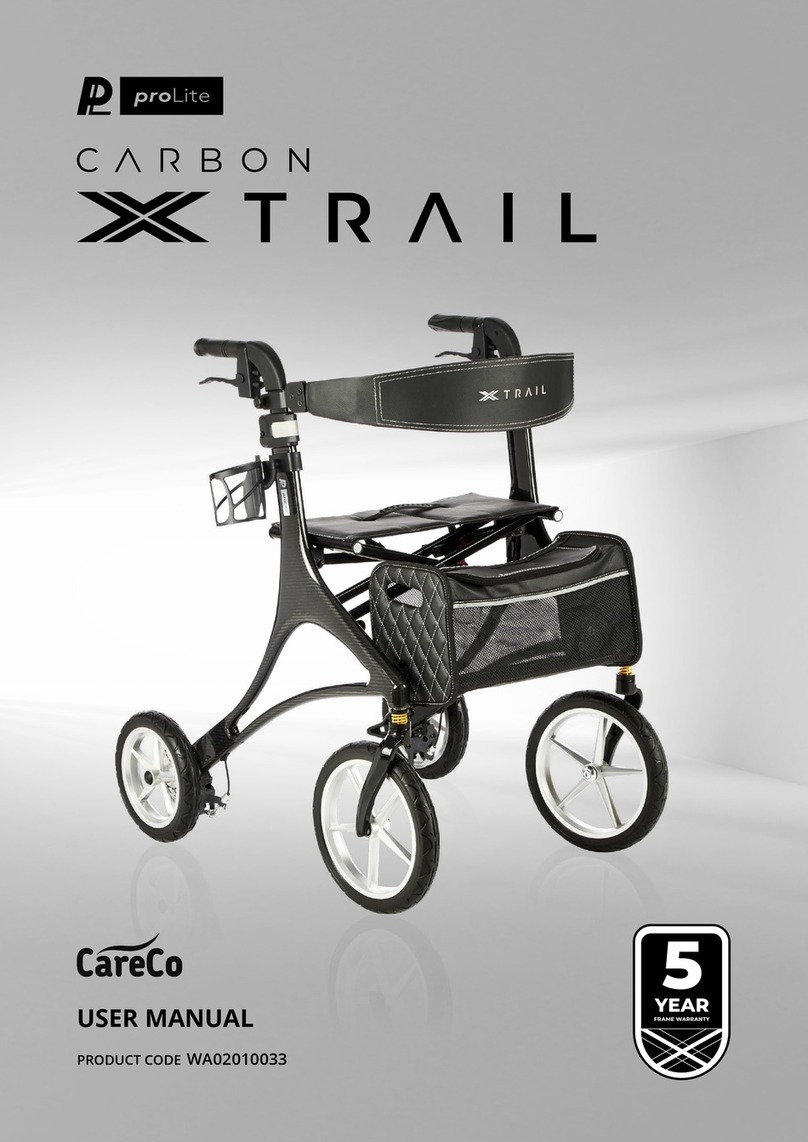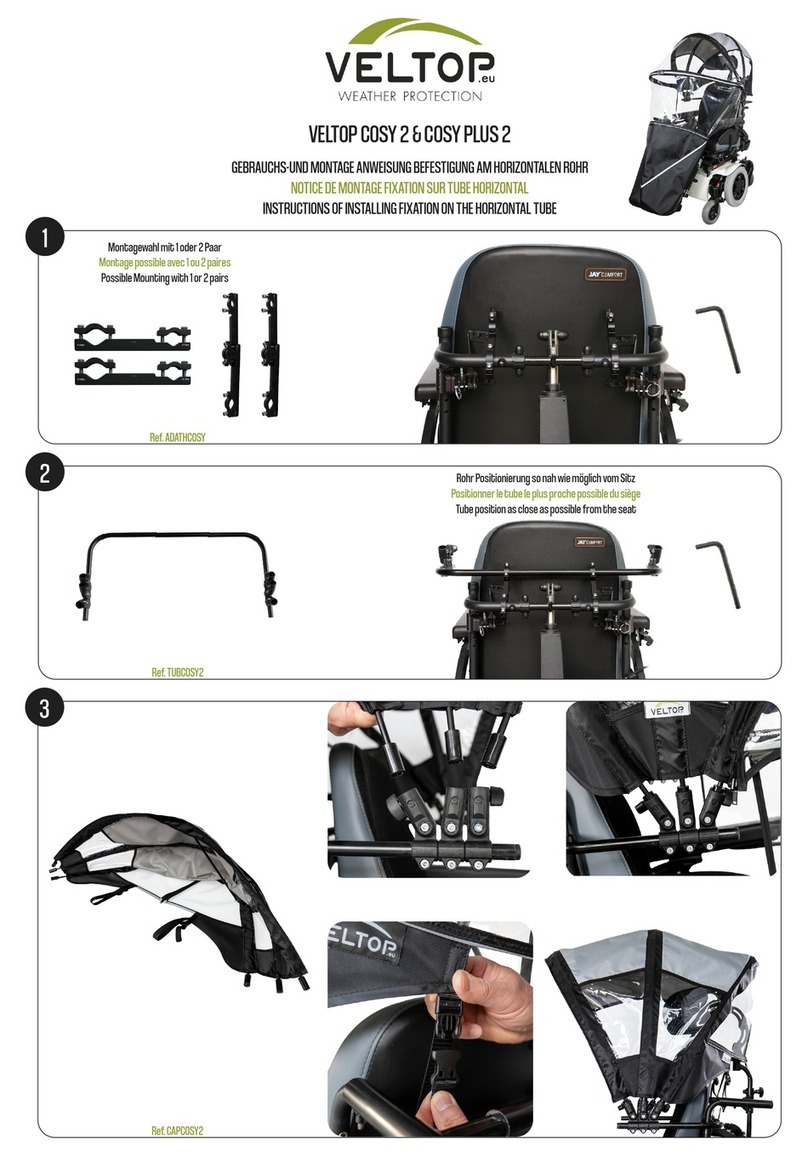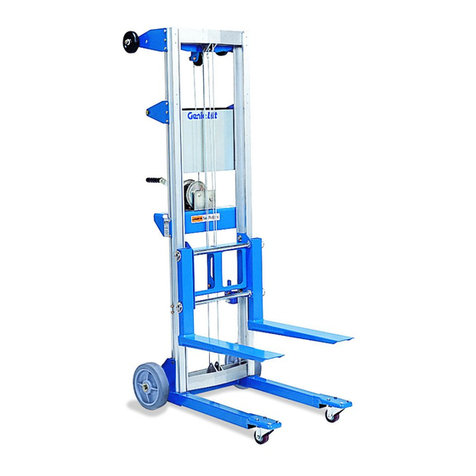Prism Medical UK Mackworth Essentials 180 User manual

User Manual
Mobile Hoist
Essentials 180

Contents
1.0 Safety Instructions and Warnings
1.1 Caution .......................... 3
1.1 Symbols used ..................... 4
1.2 Contraindications ................. 5
1.3 Intended use...................... 5
2.0 Components/Key Parts ............... 6
3.0 Assembly Instructions ................
3.1 Unpacking ....................... 7
3.2 Pack contents ..................... 7
3.3 Hoist assembly.................... 8
3.4 Electrical connections ............. 9
4.0 Final Inspection......................10
5.0 Hoist Operating Instructions
5.1 Manoeuvring the hoist............. 11
5.2 Adjusting hoist leg opening width ... 12
5.3 Raising and lowering the boom ..... 12
5.4 Emergency stop button ............ 12
5.5 Emergency lowering of the boom.... 13
5.6 Handset operation ................ 14
5.7 Battery pack ...................... 15
5.8 Slings............................ 16
6.0 Hoist Safety Advice
6.1 Caution .......................... 17
6.2 Daily checks...................... 19
7.0 Technical Specication
7.1 Dimensions ...................... 20
7.2 Sound levels ...................... 21
7.3 Electrical specications ............ 21
7.4 Standards applied ................. 22
8.0 Care & Maintenance
8.1 Troubleshooting .................. 23
8.2 Maintenance ..................... 24
8.3 Cleaning ......................... 26
9.0 Test Certicate.......................30
10.0 Service Record .......................31
2

1.0 Safety Instructions and Warnings
1.1 Caution
Do not attempt to use this equipment without rst
understanding the contents of this manual.
3
e hoist can easily be operated
by one person.
To ensure the safe operation
of your mobile hoist, carefully
read this entire manual, and
ensure its contents are completely
understood before use.
e hoist is designed to be used
in conjunction with slings and
accessories. Please refer to any
user guides supplied with these
components while reviewing this
manual.
Should any questions arise
from reviewing this manual
contact your local authorised
representative.
Failure to comply with warnings
in this manual may result in;
injury to the operator and/
or client and/or damage to
the mobile hoist or related
components.
Store this manual with the
documents included with the
mobile hoist and sling(s).
Contents of this manual are
subject to change without prior
written notice.
Ensure you are aware of the
sling manufacturer’s tting
instructions.
WA R NING
Do not use a clip t sling on a carry bar designed specically for
loop tting slings.
For all other sling information/clip & hoist
size compatibility, please refer to page 22 of
the General User Safety Guide.
To view our clip tting video please visit:
www.mackworth-healthcare.com/training.
For general guidance for how to t a sling,
please visit:
www.mackworth-healthcare/category/guides

1.0 Safety Instructions and Warnings
1.1 Symbols used
4
Caution - consult instructions for use
Caution - consult instructions for use
Manufacturer
Please observe local laws on recycling
Two-person li may be required
Refer to user manual
Date of manufacture
Serial number
Temperature range
Humidity range

1.0 Safety Instructions and Warnings
1.2 Contraindications
5
ere are no known
‘contraindications’ associated
with the usage of the mobile hoist
and its accessories, provided they
are used a per manufacturer’s
recommendations and guidelines.
However, it is recommended
that a client specic assessment
is completed by a trained and
knowledgeable health care
professional to determine the
method of transfer.
e manufacturer does not
recommend a required number
of caregivers for the use of our
products.
is information and
recommendation can only be
provided aer a thorough, case
specic, assessment, as there are
many factors that can inuence
these decisions.
1.3 Intended use
e mobile hoist is a liing aid
used by trained personnel. e
mobile hoist makes it possible to
transfer/li mobility impaired
clients with minimal strain
or risk to the caregiver, while
providing complete safety,
dignity and comfort to the client.
e mobile hoist is one of two
components that makes this
possible. e other component,
the sling, is a specially designed
fabric accessory that attaches to
the mobile hoist by means of a
carry bar and straps, and holds
the client during the li/transfer.
Please refer to the user guides
supplied with the sling and
reference them while reviewing
this manual.
e functions of raising and
lowering the boom, and opening
and closing of the legs on the
hoist, are accomplished by
pressing buttons on the hand
control. e hand control is
attached to the mobile hoist.

2.0 Components/Key Parts
Please familiarise yourself with the components of
the mobile hoist by referring to the diagram below:
6
Mast
Boom
Control Box and battery
Emergency lowering collar
Emergency stop button
Actuator
Carry bar
Front castors
Base
Rear brake castors
Emergency lowering button

3.0 Assembly Instructions
3.1 Unpacking
7
e hoist will arrive to you in a robust box, please be careful when
removing the components from the box. Please read the user guide in
full before operating.
is user manual should be kept safe for future reference.
3.2 Pack contents
e Hoist carton contains (shown in Fig. 1 below):
• Base - tted with 2 braked rear castors and
2 non‐braked front castors
• Mast and boom assembly including;
actuator, battery pack, control box and carry bar
• Mast locking hand wheel and bolt
• Handset
• Battery charging cable
Some of the parts are heavy and will need to be lied with care.
Heavier items may need two people to li.
(Please refer to technical specications on page 20 to 21)
WAR N ING
Fig. 1

3.0 Assembly Instructions
3.3 Hoist assembly
8
Do not use a sharp knife/edge to open the packaging.
a. Carefully open the box and remove all loose parts and excess
packaging from the carton.
b. Carefully li the hoist components out of the carton.
WAR N ING
2-person li recommended.
c. Place the hoist base on a at surface and
ensure the rear braked castors are locked.
d. Remove the black mast locking hand
wheel from the top of the base (as shown
in Fig. 2).
e. Ensure all cables are routed correctly
and are clear of the base and mast when
liing into position (as shown in Fig. 3).
WAR N ING
WAR N ING
Please ensure both hands are on the
handles when liing the mast into
position, possible risk of nger trap.
f. When the mast if fully engaged with the
base, t and fully tighten the mast locking
hand wheel (as shown in Fig. 4 and 5).
Ensure the mast is fully seated into the
base and the mast locking wheel is in
position and tight before using the hoist.
WAR N ING
Fig. 2
Fig. 3
Fig. 4
Fig. 5

3.0 Assembly Instructions
3.4 Electrical connections
Connect all the cables to the control box
as shown in the pictures opposite.
a. Connect the up/down actuator cable
connector to the second circle (marked No.
1) from the le side of the control box (as
shown in Fig. 6).
b. Connect the leg spreading actuator
cable connector to the third circle (marked
No. 2 in Fig. 6) from the le side of the
control box (as shown in Fig. 7).
c. Connect the handset connector to the
large circle on the le side of the control
box. A lug on the plug ensures correct
orientation of the hand control connector
(as shown in Fig. 8).
d. Connect the mains cable/power cord to
the control box (as shown in Fig. 9).
9
Conrm all cables are located and
secure before operating the hoist
as shown in (Fig. 10).
WAR N ING
Fig. 6
1
Fig. 7
Fig. 8
Fig. 9
Fig. 10
2

4.0 Final Inspection
Before rst operation of the hoist:
• Conrm all cables are located and secure.
• Ensure the red emergency stop button on the control box is in the
out position (rotate clockwise to release if required).
• Press the up button on the handset and conrm the actuator
raises the boom.
• Press the down button on the handset and conrm the actuator
lowers the boom.
• Press the button on the handset to operate the leg opening and
conrm the actuator moves the legs outward.
• Press the button on the handset to operate the leg closing and
conrm the actuator moves the legs inward.
• Press the red emergency stop button on the control box an check
that actuators do not operate until the button is returned to the
out position.
• Check the emergency lowering function, both mechanical and
electrical, work properly.
• Check the rear wheel brakes work properly.
• Check the battery pack is fully charged.
Your hoist is now ready to use.
10

5.0 Hoist Operating Instructions
5.1 Manoeuvring the hoist
To move the hoist forward, hold onto the
handle bar and push forward.
When turning the hoist, use both hands
on the handle. Alternatively, it is possible
to rotate the hoist by applying the brake to
a single rear caster and rotating the hoist
about the braked caster. is movement
should be performed with a smooth,
slow action to avoid swinging the patient
unnecessarily.
e Mackworth Essentials 180 mobile hoist
has two rear casters with brake.
e rear casters can be braked for rotation
(by applying a single brake), lateral
movement, and parking. To apply the
brake, press the brake pedal down with
your foot (as shown in Fig.13). To release
the brake, press the raised pedal towards
the wheel (as shown in Fig.14).
During liing, the rear wheels should
remain unlocked so that the hoist will
11
e wheels should be locked if there is a risk of the hoist moving to
the patient. For example, when liing the patient from the oor.
WAR N ING
Do not stand on the actuator, or use the
actuator to push the hoist (Fig. 11 and 12).
WAR N ING
Fig. 11
Fig. 12
Fig. 13
Fig. 14

5.0 Hoist Operating Instructions
12
5.2 Adjusting hoist leg opening width
e legs of Mackworth Essentials 180 Hoist are electrically operated
for opening and closing to adjust the base width. e legs can be
opened to enable access around arm chairs or wheel chairs. When
relocating the hoist, manoeuvring through narrow doorways and/or
passages, the hoist legs should be in the closed position.
Leg adjustment is achieved by pressing
appropriate buttons on the hand control.
e legs’ motion will be stopped whenever
the hand control button is released.
5.3 Raising and lowering the boom
e up and down movement of the boom
on the Mackworth Essentials 180 Hoist is
achieved by a powerful electric actuator
which is controlled by hand control.
e hand control has two buttons with
directional arrows up and down. e
actuator stops automatically at the limit of
travel in both directions.
5.4 Emergency stop button
e Mackworth Essentials 180 mobile hoist
is tted with an Emergency Stop button.
Push the Emergency Stop button (as shown
in Fig.15) to cut all power on the mobile
hoist (an audible beep will be heard if
the emergency button is pressed during
operation of the boom or leg opening).
To resume power, release the emergency
stop button by turning in a clockwise
direction (indicated by arrows on the
Emergency Stop button) as shown in Fig.16.
Fig. 15
Fig. 16

5.0 Hoist Operating Instructions
13
5.5 Emergency lowering of the boom
5.5.1 Electrical emergency lowering
e hoist boom can be lowered by pushing
the emergency lowering button on the
control box with a suitable object, such as a
pen nib or pencil (as shown in Fig.17).
5.5.2 Mechanical emergency lowering
In case of power failure, it is possible to
mechanically lower a patient placed in
Mackworth Essentials 180 mobile hoist.
Turn the manual lowering handle in
clockwise direction (as shown in Fig.18)
to lower the boom until the boom reaches
a safe position.
e manual emergency lowering system should be used only if the
lowering procedures described in the previous section of the manual
do not work. Should you have any concerns or questions contact
your local authorized Prism Medical Representative.
WAR N ING
Do not use the hoist aer the manual lowering mechanism has
been used. e li must be reset by a qualied technician aer use.
Contact your local authorised Prism Medical UK Service Provider.
WAR N ING
Fig. 17
Fig. 18

5.0 Hoist Operating Instructions
14
5.6 Handset operation
e Hand Control has four
functions: up/down
and legs in/out.
Press down on each symbol to
operate the desired function. It is
not possible to use two functions
at the same time. Once the hoist
has reached the extent of its travel
in a given direction, an audible
beep will sound.
e handset is attached to the
control box via a exible, coiled
cable that is secured in place
with a friction-t plug. e
coiled cable is designed to give
the greatest number of options
for carer positioning without
having a trailing cable around
the patient. e handset also
incorporates a hook which gives
the carer exibility whist moving/
positioning the patient. Clear and
easy to understand labelling of
the buttons enable ease of use for
the care giver. Fig. 19

5.0 Hoist Operating Instructions
5.8 Battery pack
e battery pack is protected from full discharge by a low voltage
alarm & illuminated LED. e alarm will sound or LED illuminate
when the battery needs recharging. Complete the li and place the
battery on charge.
15
• Keep the battery pack fully charged.
• e battery pack should never be allowed to run completely at.
• e battery pack should never be stored for long periods of time
without a regular charge.
5.8.1 Charging the battery pack
e battery pack can be recharged via
mains lead (terminated with a gure of
eight plug), or can be unclipped from
the control box (see Fig. 20 and 21) and
charged via an optional external charger
(available separately).
a. Fit the mains lead gure of eight plug
into charger link cable (see Fig.22).
b. Plug the 3-pin mains plug into a suitable
mains outlet and switch the mains supply on.
Note: e red Emergency Stop button has
to be out for the battery pack to charge.
c. Charging is automatic and will
normally take eight to twelve hours to fully
charge (from completely discharged state).
You cannot overcharge the battery pack if
le for longer periods of time.
d. To return the hoist to use, switch o
the mains supply. Remove the gure of
eight plug from the socket at the base of the
control box. e hoist is now ready for use.
WAR N ING
Fig. 22
Fig. 20
Fig. 21

5.0 Hoist Operating Instructions
5.9 Slings
is is not an exhaustive list, check with the supplier for available slings.
Universal sling
Dual access sling
e range of slings are the result of many years of experience
in assessment and clinical expertise, combined with input from
professional workers and users of slings. As a result, the range is a
collection of subtly unique designs, combined with the use of modern
materials and technology which provides comfort, security, support
and dignity for the user, and aids correct application of the sling by
the carer.
16
Universal C/W
Head support
Dual access SRS sling
Hammock sling
Comfort recline

6.0 Hoist Safety Advice
6.1 Caution
17
Your hoist is for patient liing.
Do not use it, or allow it to be used, for any other purpose.
Your Mackworth mobile hoist has been manufactured and tested to
exceed BS EN 10535:2006. is does not mean that it can be used
without care.
All operators should have read the operating instructions and
appreciate this Caution section.
When not in use, remove the sling from the hoist system to reduce
the potential for entrapment or strangulation. Especially in areas
where children may be present.
WAR N ING
WAR N ING
CAUTION: YOUR MOBILE HOIST
Is less stable on sloping surfaces. A 5 degree slope is the maximum
permitted and then only with great care.
Is less stable when the load is at maximum height.
Is less stable when the load is allowed to swing.
Is dangerous to the patient being carried when used with undue care
and attention or pushed at speed.

6.0 Hoist Safety Advice
18
Please read and follow the safety precautions below. ese basic safety
precautions will help make liing operations easy and trouble free.
A LWAYS
Carry out the Daily Checks (detailed in section 6.2)
Conduct a risk assessment, including patient, hoist capacity
and sling suitability, prior to any liing operation
Ensure you have had basic training in moving and handling
before using the mobile hoist
Familiarise yourself with the hoist controls and safety features
Manoeuvre the hoist with the handle provided
Fit the sling in accordance to the user manual for specic sling
Carry out lis in accordance with this user manual
Apply the brakes when parking the hoist
NEVER
Push a loaded hoist at a speed exceeding a slow walking pace
Li a patient while the brakes are on
(unless liing from the oor)
Manoeuvre the hoist using the boom or patient
Use a sling unless recommended for use with this hoist
Push the hoist over uneven or rough ground
Bump the hoist down steps
Allow water to enter the handset or control box
Use the hoist outdoors
Use a frayed or damaged sling
Charge the mobile hoist in a bathroom or shower

6.0 Hoist Safety Advice
6.2 Daily checks
e following checks are those recommended by Prism Medical UK
and are supplementary to requirements that may be applicable for
current Liing and Handling and other Health and Safety regulations
such as e Liing Operations and Liing Equipment Regulations
1998 which may have additional requirements to those set out below:
19
CHECK
e legs open and close correctly.
e hoist moves freely on its castors.
e carry bar for free movement in all directions and that it is
securely attached to the boom.
e sling hooks on the carry bar are free from excessive wear.
e hand control lowers and raises the boom satisfactorily.
e operation of the emergency stop button.
e hoist is o charge before use and all leads are fully engaged
into their sockets.
e hoist is charged to a satisfactory level of use - raise and
lower the hoist by operating the handset. If the hoist makes a
bleeping sound do not use as the hoist needs to be charged.
e mast is fully engaged and the locking nut is fully tightened.
e sling for fraying or damage. Do not use a sling with any
signs of fraying, tears or other damage to the straps or body of
the sling.

7.0 Technical Specification
7.1 Dimensions
Total weight: 39.8kg Actuator thrust: 10,000N
20
1185.43
1740.19
1208.50
381.55
601
Table of contents
Popular Mobility Aid manuals by other brands
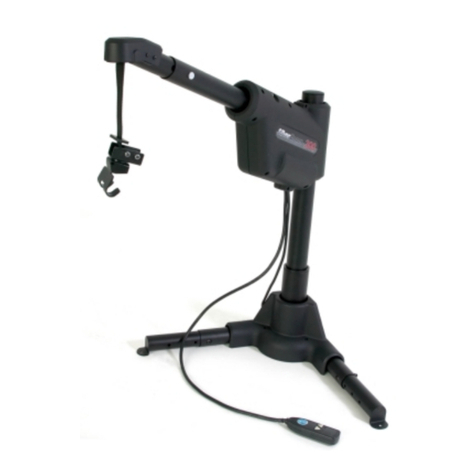
Pride Mobility
Pride Mobility SilverStar SilverBoom 300 Specifications

Rhythm Healthcare
Rhythm Healthcare B3800F quick start guide
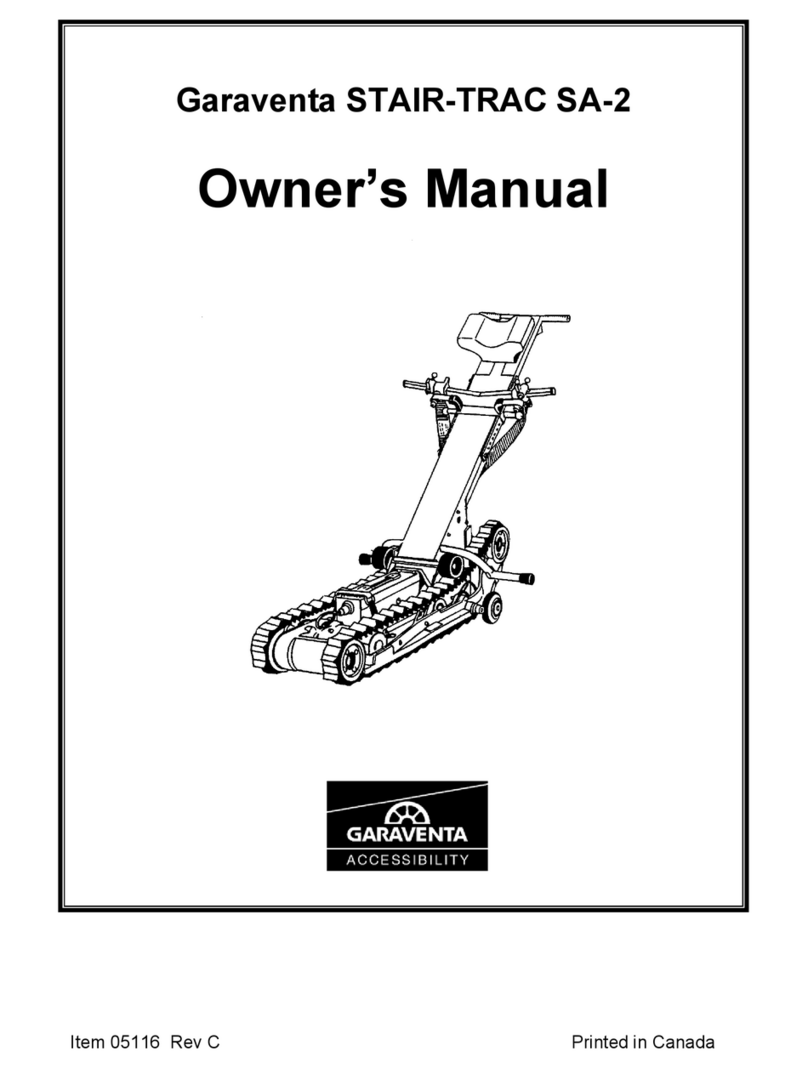
Garaventa
Garaventa STAIR-TRAC SA-2 owner's manual

Drive Medical
Drive Medical walking stick manual
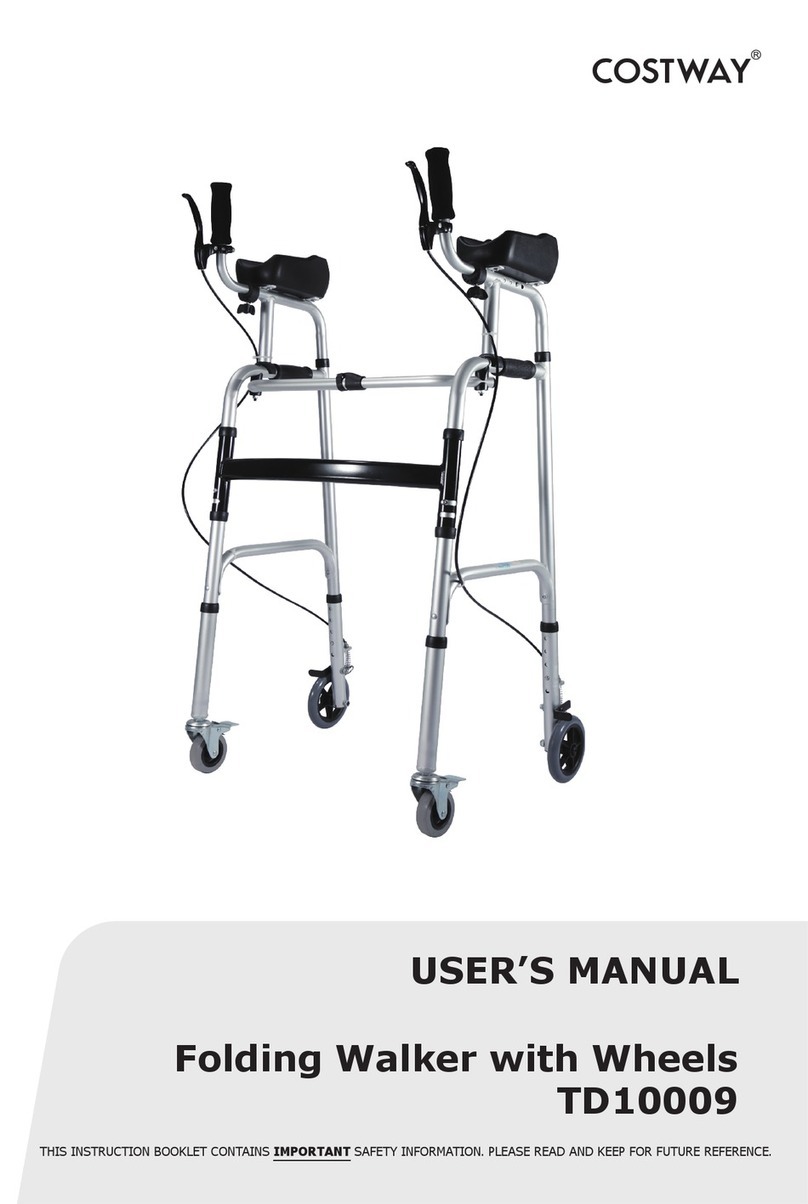
Costway
Costway TD10009 user manual
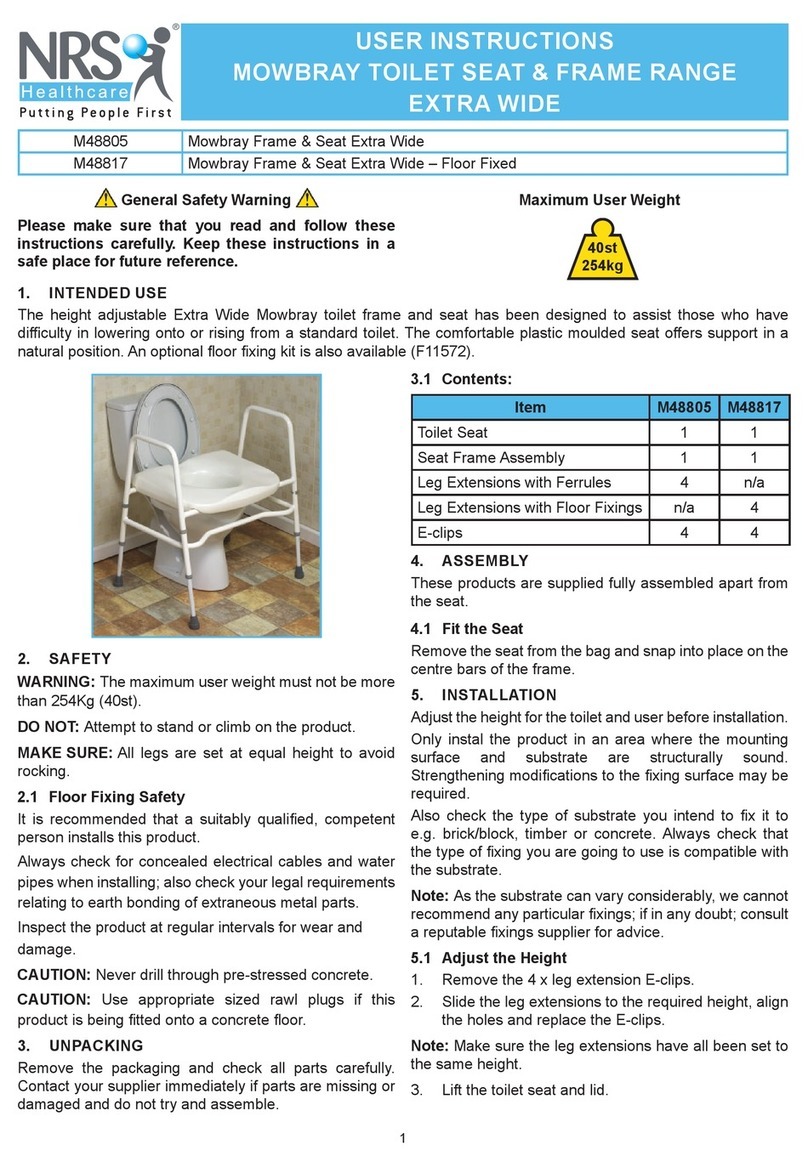
NRS Healthcare
NRS Healthcare M48805 User instructions
